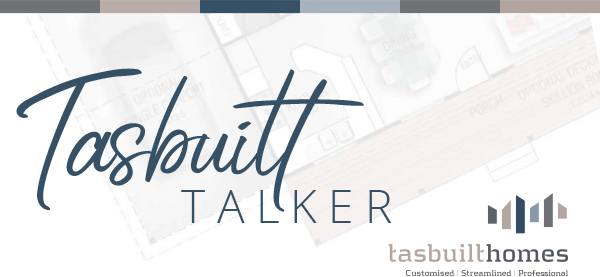Receive your free commercial brochure Request Now
Key Advantages of Prefabricated vs Conventional Construction
When we describe conventional construction techniques, we are referring to those methods which have been used for centuries to build structures. Having such an extended history means that there isn’t just one single, universal way to construct a building, so there are a wide variety of methods that we class as conventional.

The key distinction between these conventional construction methods and prefabricated, is the way building parts are assembled.
Conventional construction uses building parts to assemble and construct the building only once, on-site. Conventional builders build from the ground up, and foundations, walls, roofs, painting, and everything else is performed at the construction site. Prefabricated construction on the other hand, uses a process where building modules are constructed prior to arriving at the site at a controlled factory. From then, the modules are transported to the construction site, anchored to the existing foundation, and completed.
The other key point of difference between these conventional methods and prefabricated, is that conventional methods are a linear process in terms of timeline, whereas prefabricated construction operates as a simultaneous building process where multiple parts can be done concurrently.
Conventional construction requires that each process must follow the other. This means the third process in line cannot begin before the second one is complete. For example, foundation work cannot start before grading and site preparation is completed, and framing cannot be completed until the foundation is laid. Prefabricated modular construction enables processes to occur simultaneously so that while on-site work occurs at the construction site such as site preparation and laying of foundation piers, the building module construction can concurrently take place in the off-site factory. This essentially makes for a more streamlined and overall faster process. A big win when it comes to sticking to timelines!
So, what are the implications of simultaneous vs linear construction?
1. Time
The duration of the conventional build is generally longer due to the linear processes and is reliant on having the required trades people and materials on site at the right time in the process. There are also risks of delays such as poor weather (rain, snow, thunderstorms, extreme heat, and extreme cold), off-seasons for construction, and vandalism. During certain conditions, conventional construction cannot resume until it passes, which can delay the project and incur more costs (and disappointment for the end user!).
In many instances, prefabrication takes less than half the time when compared to conventional construction. This is due to fewer factors derailing upfront planning, elimination of on-site weather factors, subcontractor scheduling delays and quicker fabrication as multiple pieces can be constructed simultaneously.
2. Sustainability
Prefabricated construction is often commended for energy efficiency and sustainable construction. Conventional construction methods require extra materials that lead to increased waste. However, since prefabricated sub-assemblies are constructed in a factory, extra materials can be recycled in-house. This is a considerable improvement over sending waste directly to a landfill from a conventional construction site. Also, the controlled environment of a factory allows for more accurate construction, tighter joints, and better air filtration, which in turn allows for better wall insulation and an increase in energy efficiency.
3. Consistent Quality
Since prefabricated construction occurs in a controlled manufacturing environment and follows specified standards, the sub-assemblies of the structure will be built to a uniform quality. On-site structures are dependent upon varying skill levels and the schedules of independent contractors. These all contribute to the craftsmanship and overall quality of the given structure. With prefabrication, each sub-assembly is built by an experienced crew in a weather-resistant factory, with multiple quality checks throughout the entire process. While the productivity of labour on conventional construction is evaluated based on their daily work, prefabricated construction concentrates on a labourers’ work quality, ability to adjust to varying projects, willingness to learn new things, and so on.
4. Reduced Site Disruption
Since many components of a building are completed in the factory, there is significantly less truck traffic, equipment, and material suppliers around the final construction site with a prefabricated build. This limits the disruption in contrast to conventional construction sites that suffer from noise, pollution, waste, and other common irritants. This streamlined approach to construction provides a far more efficient atmosphere for productivity and eliminates unnecessary distractions and interference that are typical of conventional builds.
5. Safety
For prefabricated modular construction created in a factory-controlled environment, there is less risk of problems associated with moisture, environmental hazards and dirt. Conversely, an indoor construction environment presents considerably fewer risks for accidents and other liabilities as there are strict factory processes and procedures that protect the worker from on-the-job injury.
At a construction site, although safety is of utmost importance, workers are subjected to weather-related conditions, changing ground conditions, wind and other crew members who are at the site which can compromise their overall safety. There is also a greater risk of materials theft and vandalism as the site is somewhat exposed.
Summary
The five key differences we’ve highlighted show clear advantages of
prefabricated when compared to conventional build. In terms of design
options and compliance, there are no differences. Both conventional and
prefabricated construction allow customisable designs limited only by
your imagination, and all construction in Australia is obliged to follow
national and local building laws, codes, and regulations no matter whether the building is conventional or prefabricated.
If you are considering building and would like the advantage of a faster, quality build with less impact on the environment and your soon to be neighbours, contact the Tasbuilt team on 1800 639 310 to help you design your dream home!



